 |
| KD-63 air-to-surface missile and its carrier the H-6H missile bomber |
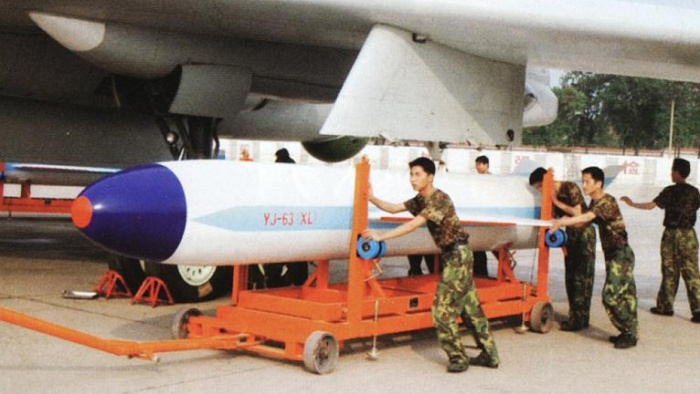 |
| This early example shows the old designation YJ-63(XL) on its body |
The KD-63 (KongDi-63, official designation K/AKD63, previously designated YingJi-63 or YJ-63), is an air-launched cruise missile (ALCM) developed by China Haiying Electro-Mechanical Technology Academy (CHETA, a.k.a. The Third Academy). The missile was derived from the HY-4 (NATO code name: CSS-C-7 Sadsack) land-based anti-ship cruise missile (ASCM) and the YJ-6 (CAS-1 Kraken) air-launch anti-ship missile, both of which can trace their origins to the HY-2 (CSS-C-3 Seersucker), a Chinese derivative of the Soviet P-15 (SS-N-2 Styx) liquid-fuel active radar-homing anti-ship missile.
The KD-63 features a large round body with a round nose and an engine inlet located under the missile body near the rear end. It has a pair of large delta wings and an X-shape tail control surface arrangement. The missile consists of four main sections: guidance, warhead, propulsion, and control surfaces.
The KD-63 is carried by the modernised Xi’an H-6H (Tu-16 Badger) medium-range bomber. Each H-6H carries two KD-63 missiles on its under-wing stores stations. The missile is launched at altitudes between 200 m to 5,000 m from a dive. Once leaving the carrier aircraft, the missile drops down for 70-120 m before its engine starts. The missile is then accelerated to a sustained subsonic speed of 900 km/h and flies at a typical altitude of 600 m.
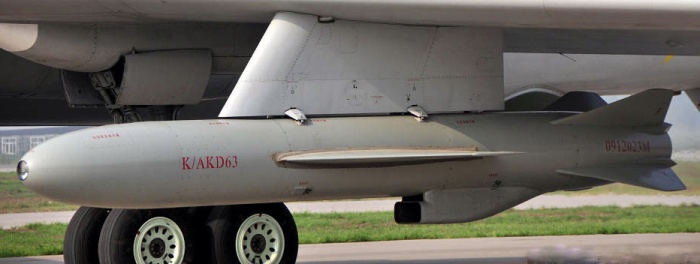 |
| KD-63 TV-guided air-to-surface missile |
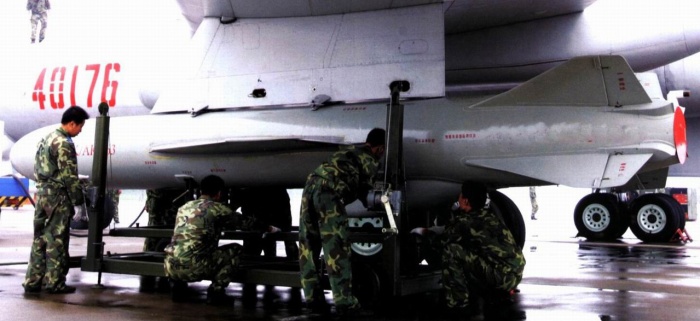 |
| KD-63 missile was developed from the HY-4 anti-ship missile |
The KD-63 relies on inertial navigation, with input of datalink command (and possibly GPS signal correction) and TV terminal guidance. The missile is fitted with a CCD camera, which transfers images of the target back to the carrier bomber. The bomber’s onboard fire-control computer then sends correction command back to the missile until it hits the target. Alternatively, the missile can be guided using a manual command to line of sight (MCLOS) method, where the weapon operator manually ‘flies’ the missile remotely to its target. The communications between the missile and the carrier bomber is via the datalink antenna located underneath the bomber’s fuselage behind the bomb bay doors.
Carrying a 500kg high-explosive (HE) warhead, the KD-63 was designed to hit large fixed land targets, such as bridges, airport, command posts, and barracks. Its TV-seeker can lock on a typical target at a distance of 12 km. The missile’s effectiveness is greatly hampered at night or in adverse weather conditions. It is also vulnerable to enemy jamming due to its dependence on the carrier aircraft for guidance command.
Specifications:
| IOC | 2004 |
| Length | 7.0 m |
| Diameter | 0.76 m |
| Launch weight | 2,000 kg |
| Warhead | 500 kg HE |
| Propulsion | FW-41B turbojet |
| Speed | 900 km/h |
| Max range | 180 km |
| Min range | 20 km |
| Guidance | Inertial + datalink command + GPS? + TV terminal |
| Max target detection range | 18 km |
| Max target lock-on range | 12 km |
| Launch altitude | 200 – 5,000 m |
| Flight altitude | 7 – 1,000 m (typical 600 m) |
| CEP | 2 – 6 m |
KD-88
The KD-88 (KongDi-88, official designation K/AKD88) is the land-attack version of the YJ-83K (YingJi-83K) series air-launched subsonic sea-skimming anti-ship cruise missile. It is PLA’s second-generation standoff weapon, designed for use against fixed high-value targets. The baseline version of the missile is fitted with a TV-seeker for terminal guidance, which only allows the missile to be operated in good weapon conditions in day light. Alternatively the missile could be fitted with semi-active radar or infrared imaging seekers for all-weather, day/night operation capability.
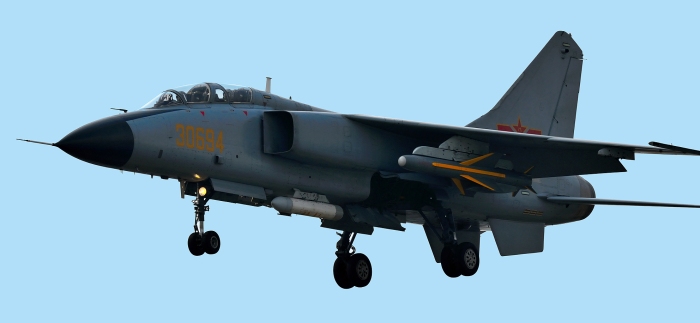 |
JH-7A fighter-bomber carrying the KD-88 missile under its wing. The targeting pod is clearly visible underneath the aircraft fuselage |
 |
| KD-88 air-to-surface missile is similar in concept to the U.S. AGM-84 SLAM, but is fitted with a TV-seeker which is more prone to adverse weather and enemy jamming |
CHETA initially introduced a land-attack version of its C-802A anti-ship missile debuted C-802KD during the 2005 DSEI exhibition. Fitted with a semi-active radar-homing seeker, the missile could be used to attack both surface vessels and fixed land targets. Other features of the missile included on-off-on radar operation and multiple target selection capabilities. The missile had a launch weight of 600 kg and could deliver a 190 kg HE warhead to a maximum distance of 180 km.
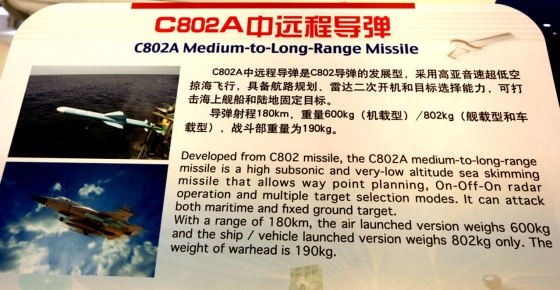 |
| CHETA brochure introducing its C-802A missile |
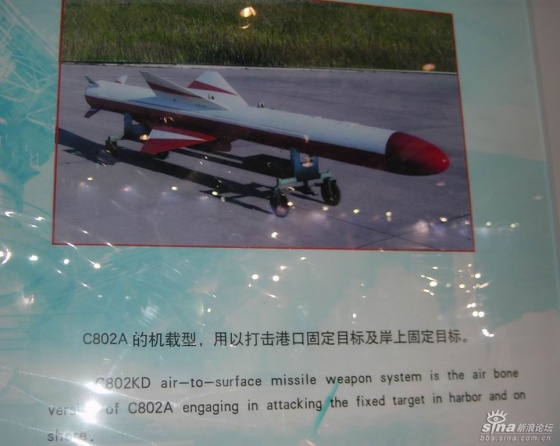 |
| CHETA brochure introducing the air-launched C-802KD |
The TV-guidance version of the missile, designated KD-88, was commissioned by the PLA around 2006. The missile uses inertial navigation system (INS) with datalink command and possibly GPS inputs for mid-course correction. The terminal guidance of the missile can be controlled either by the aircraft’s fire-control computer automatically or by the weapon operator manually. The carrier aircraft carries a targeting pod under its fuselage for receiving television images of the target from the missile and transmit guidance command back.
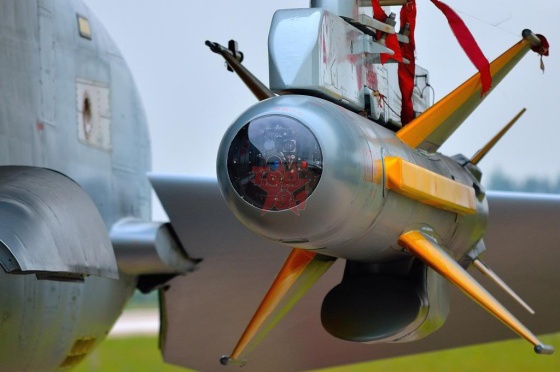 |
| KD-88 uses inertial navigation with datalink command and TV terminal guidance |
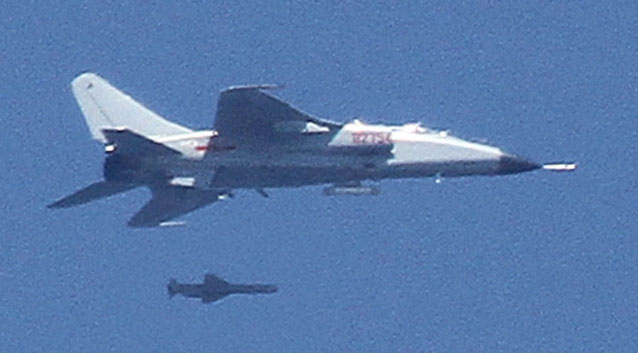 |
| JH-7 fighter-bomber launching the KD-88 air-to-surface missile |
More recently, CHETA revealed a passive infrared-homing version of the missile debuted CM-802AKG. According to CHEAT’s brochure, the missile uses infrared homing with datalink command input, and is capable of attacking targets both on land and in the sea. The missile has a launch weight of 670 kg and carries a heavier semi-armour-piercing HE warhead (285 kg) , with a maximum range of 230km.
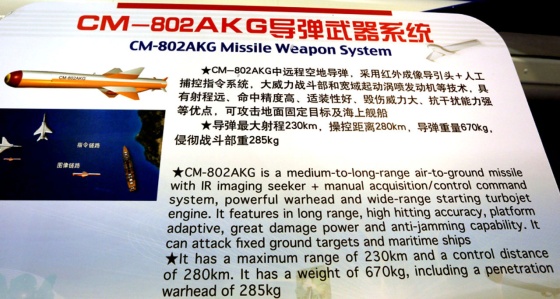 |
| CHETA brochure for the CM-802AKG |
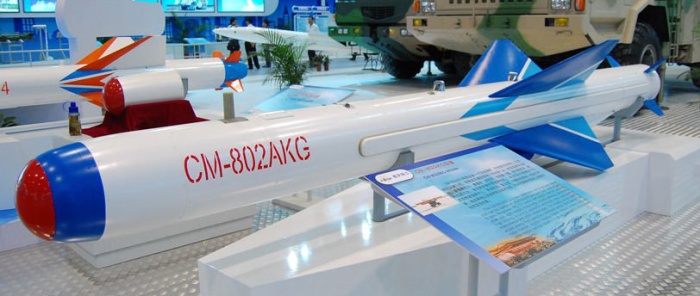 |
| CHETA CM-802AKG infrared-homing air-to-surface missile |












.jpg)

.jpg)
facebook
twitter
google+
fb share